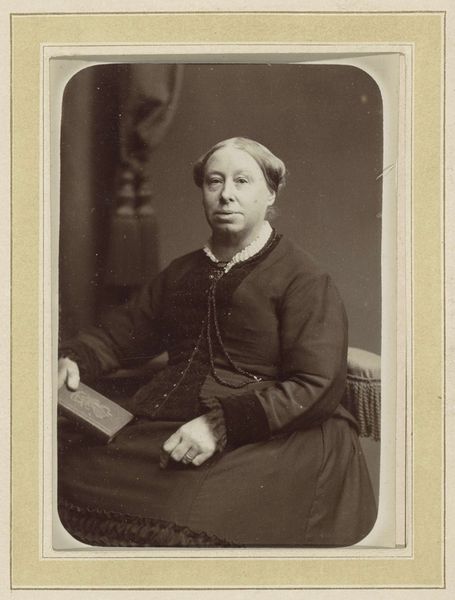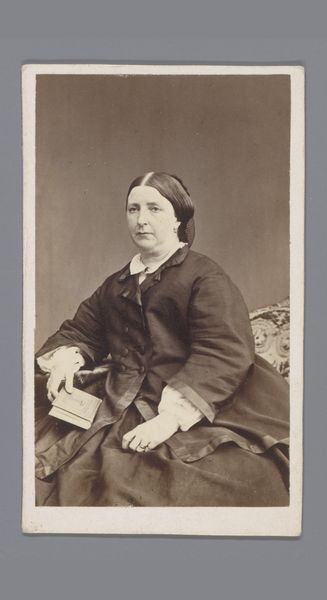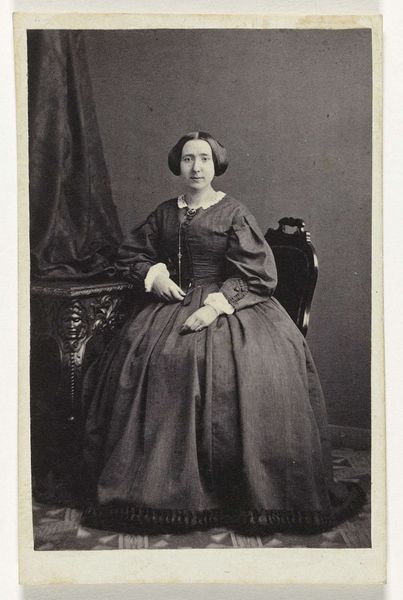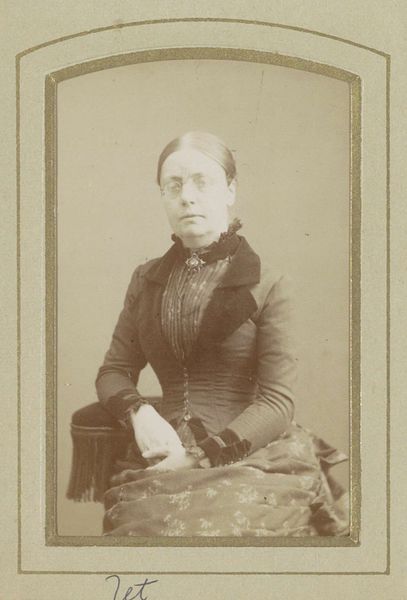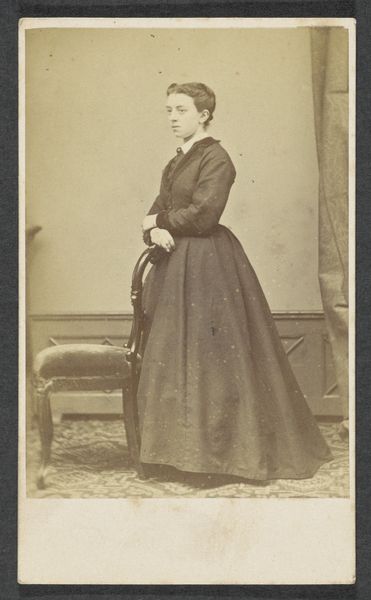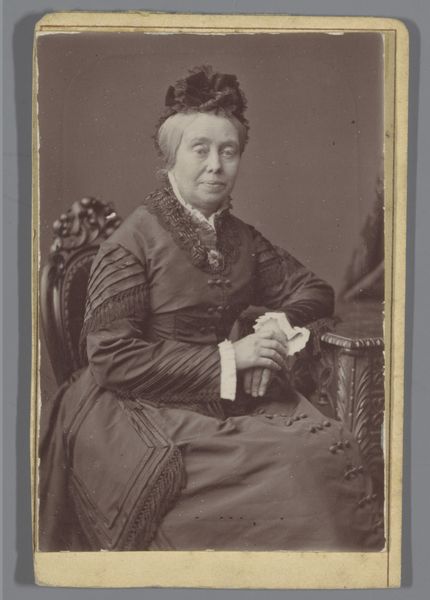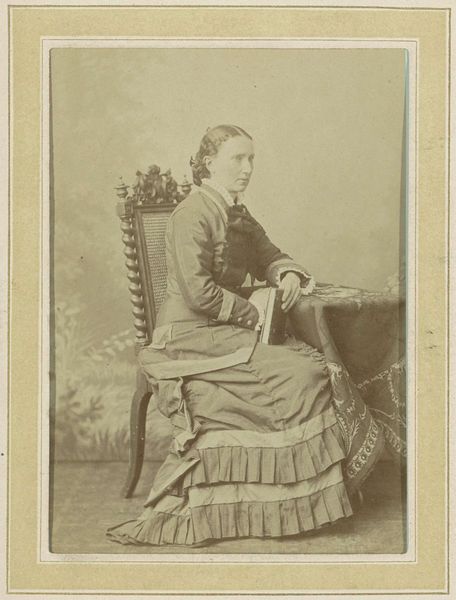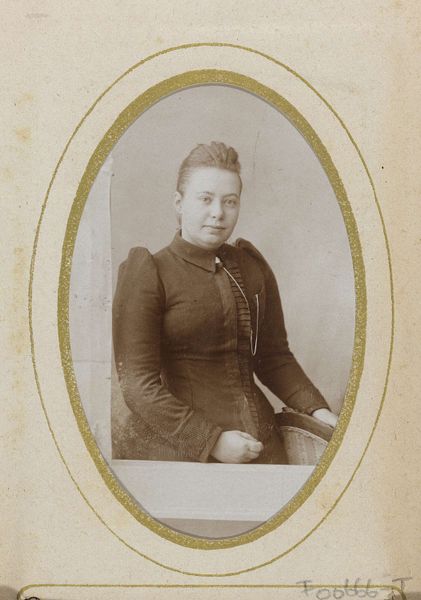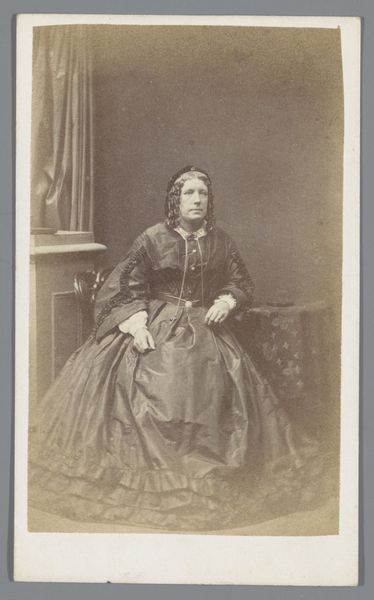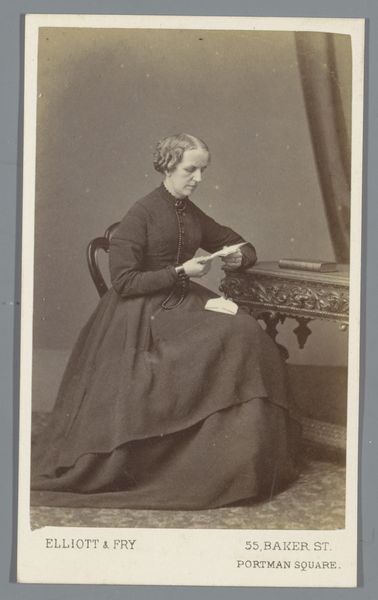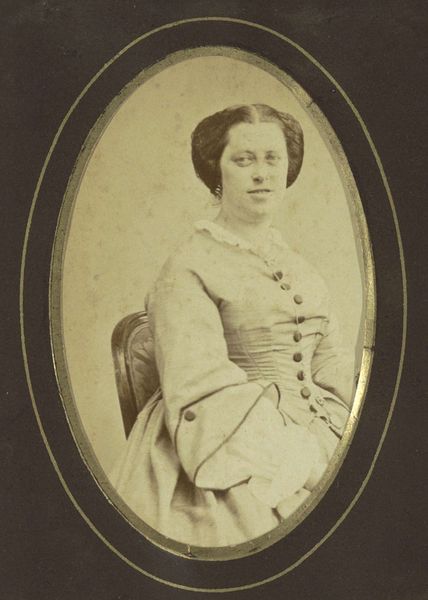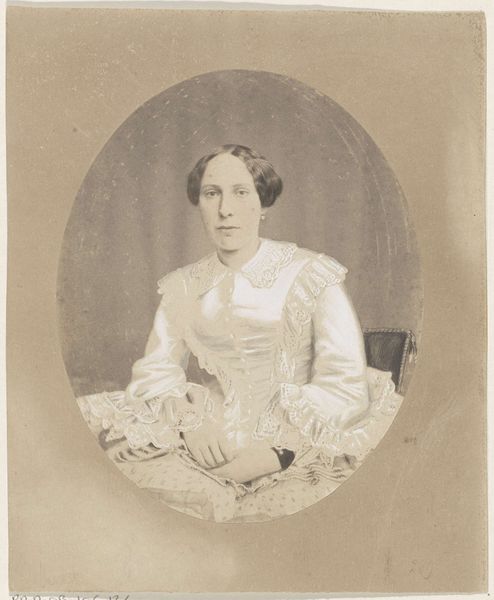
print, daguerreotype, photography, albumen-print
#
portrait
# print
#
wedding photography
#
daguerreotype
#
photography
#
history-painting
#
academic-art
#
albumen-print
Dimensions: 16 × 12.6 cm (image/paper); 39.2 × 28 cm (mount)
Copyright: Public Domain
This photograph of Queen Victoria was made by André-Adolphe-Eugène Disdéri, a master of the carte de visite format, using a wet collodion process. It was a cutting-edge technology at the time. The process involved coating a glass plate with chemicals, exposing it in the camera while still wet, and then developing the image. The resulting glass negative could then be used to make multiple prints on paper. This made photography much more accessible and affordable. Disdéri was one of the first to realize the commercial potential of photography. These easily reproducible photographs democratized portraiture, allowing the rising middle class to participate in what had previously been an aristocratic privilege. The rise of photography coincides with the rise of consumer culture. It allowed people to present themselves in a certain light, to craft their own image, and participate in a new kind of visual economy. This image reflects the growing democratization of art and representation in the 19th century.
Comments
No comments
Be the first to comment and join the conversation on the ultimate creative platform.
